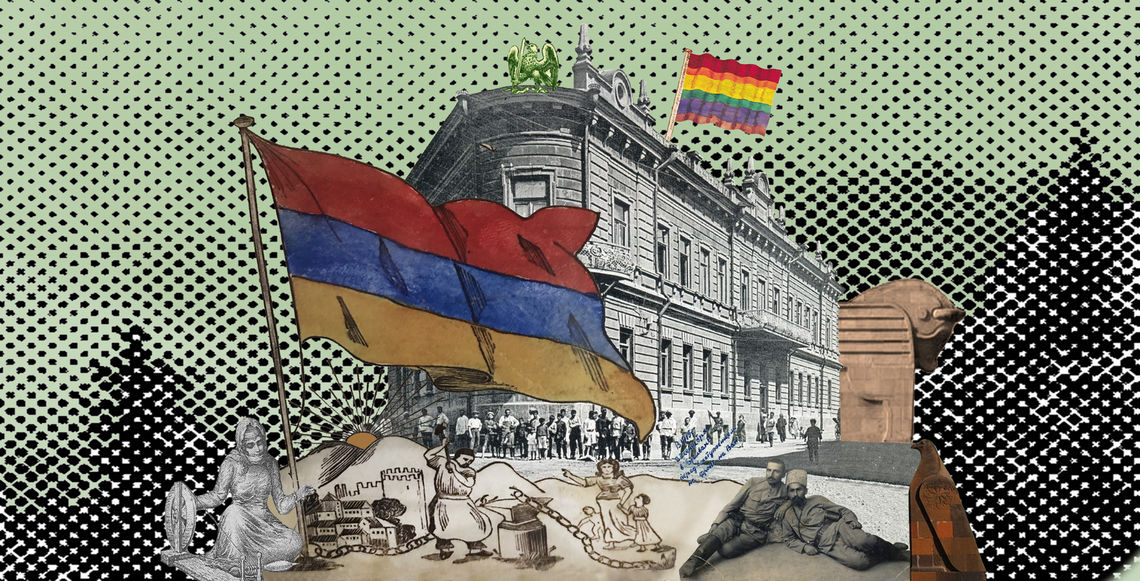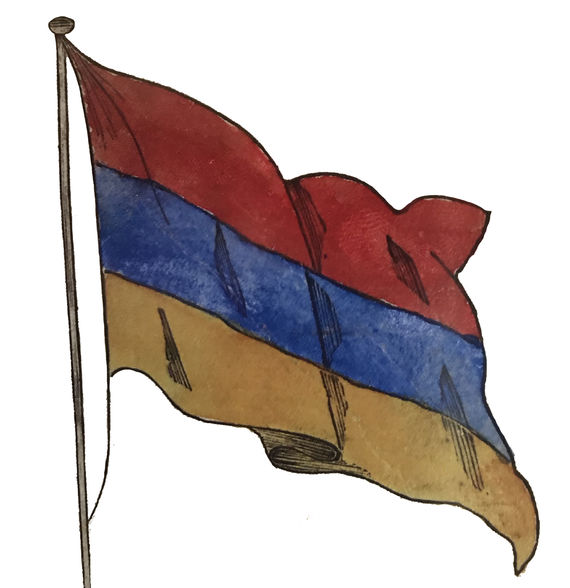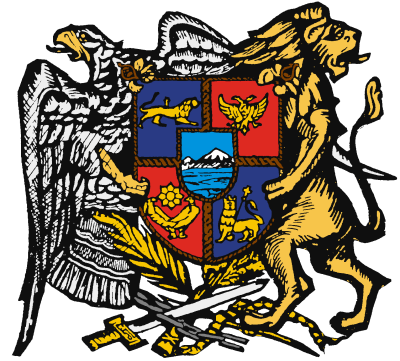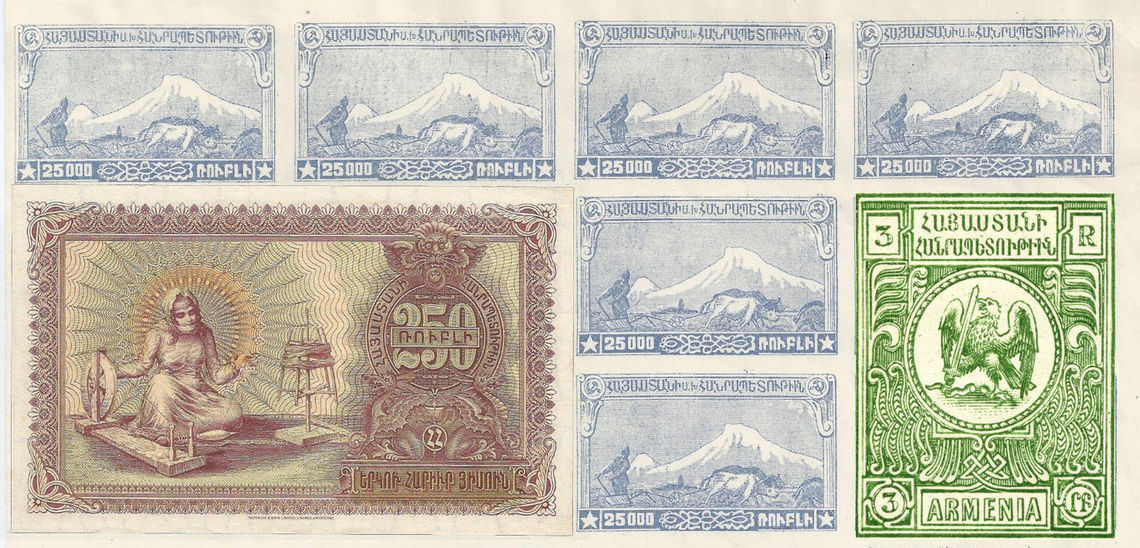
“We established the national flag of Armenia – it is horizontal with red, blue, and orange. We had long discussions about the form and colors of the flag. We took into consideration the historical flags of Armenia, we listened to the report of armenologist Stepan Malkhasyan and finally decided to choose these three colors keeping in mind that the final decision would be made by the Constitutional Assembly.”
Simon Vratsian

The Flag
In 1918, in the Government building of the First Republic of Armenia in Yerevan (currently on Arami Street), politicians, well-known Armenian artists and historians were having intense discussions about the colors and shape of the new Armenian flag. As Simon Vratsian writes in his memoirs, some of the politicians were opposed to the color orange noting that it would be hard to find the fabric. Others were arguing to use green instead. Martiros Saryan, the famous Armenian painter, was suggesting something completely different: “There are many tricolor flags and we, as an Eastern nation, need to have a flag with many colors because it’s relevant to us…I suggest to have a rainbow flag wave over our beloved and long suffering nation.”
Vratsian recalls, “Hovhannes Kajaznuni, (the Prime Minister of the Republic), was supporting orange. He used to like that particular design, and some people put much thought and symbolism into those colors. It felt that these colors (red, blue, and orange) stemmed from our experience and symbolized the birth of Armenian statehood and the future.“
After long deliberations and arguments, the Parliament opted for the horizontal flag with red, blue, and orange. The red stood for the blood of the Armenian nation, the blue was the sky over Armenia, and the orange symbolized labor.
“The Armenian people, who established their freedom with blood had to rebuild the country with patience and live freely and happily under the blue sky.”
Simon Vratsian

The Coat of Arms
In July 1918, the government authorized the coat of arms of the country designed by academician and architect Alexander Tamanyan and painter Hakob Kojoyan. The design consisted of a lion and an eagle supporting a shield that presented the insignias of four royal dynasties: Arsacid, Artaxiad, Bagratuni and Rubenid. In the middle there was an image of Mount Ararat with Noah’s ark atop.
Simon Vratsian recalls that authorizing the coat of arms was very difficult. Some people were against the idea and spirit of the coat of arms arguing that it resembled the old and knightly ideas of past centuries and did not symbolize the new Armenia. Others felt that the design was more representative of a monarchy. However, the government had to make a decision on the final design because the country was facing numerous issues and there was no time for debates on aesthetics.
The design consisted of a lion and an eagle supporting a shield that presented the insignias of four royal dynasties: Arsacid, Artaxiad, Bagratuni and Rubenid.
The National Anthem
When in 1859 Mikayel Nalbandyan wrote “The Song of the Italian Girl,” depicting an Italian girl’s patriotism and desire for freedom, he would have no idea that this poem would become the basis for the national anthem of Armenia. Years later, composer Christopher Kara-Murza wrote a song based on the poem, which premiered in the Artsrunyan Theatre in Tbilisi in 1885. The song immediately became popular, and people started to call it “Our Fatherland.” In 1918, because of its popularity, the government decided to adopt it as the official anthem of the First Republic of Armenia. Barsegh Kanachyan, an Armenian composer, arranged Kara-Murza’s song, and Nalbandyan’s poem became the lyrics. It is interesting to note that while Barsegh Kanachyan is considered the author of the anthem, the song was originally written by Kara-Murza. In 1885, when Kara-Murza composed the song, he did not write his name on the score thinking that he was not “talented enough” to be recognized by the public.
Currency/Banknotes/Stamps
Right after independence, the members of the new Armenian government started to actively work on producing the national banknotes and stamps. While the stamps were being printed in Paris, the Armenian government was using old Imperial Russian examples with Armenian letters on it. The new stamps and banknotes were designed by Armenian painter and designer Arshak Fetvadjian. The nominal value on the banknotes was printed in Arabic numbers, and the information was in Armenian, Russian, and French.
The 250-ruble banknote represented an image of an Armenian woman with a spinning wheel. The 100-ruble banknote represented an image of an eagle with a sword overthrowing a snake. The other banknotes included design elements such as decorations from old Armenian churches and scenes from the Ararat Valley.



What on Earth does pride flag have to do next to Armenian flag on the first picture? Article is about symbols of Armenia and not foreign symbols. It should be removed from the picture.
It’s not a Pride Flag. It’s the flag proposed by Martiros Saryan for the first Republic of Armenia.